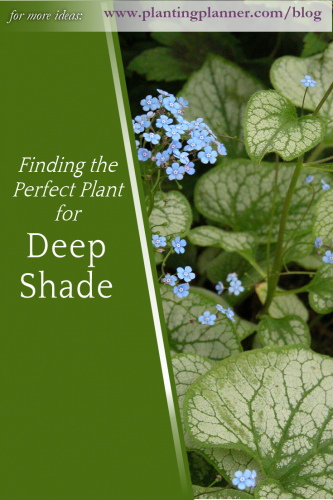from The Weatherstaff PlantingPlanner – intelligent garden design software
Need a Planting Plan for a Shady Garden? Click here
Some plants are particularly versatile and unfussy, making themselves at home and seeming to thrive wherever they come to rest. Most plants however have a preference for a particular set of growing conditions or cannot cope if the temperature gets too high or the water supply too low. Keen gardeners may relish the challenge of coaxing a particular favourite plant to prosper, but if you don’t have the time to lovingly cosset your choice specimens, getting the plants in the right place to start with is the way to go.
Plants for Deep Shade
If your garden is dark and gloomy on even the brightest day, you may have resigned yourself to a colour palette ranging from forest green to black. Or decided to give up entirely and pave the whole thing over. However, there are many plants which can tolerate deep shade – and some which positively thrive on it. Here are a few:
Ajuga reptans ‘Burgundy Glow’
A creeping, evergreen perennial, spreading by means of rhizomes to form a mat of attractive foliage. ‘Burgundy Glow’ has variegated leaves – silvery-green, with shades of pink, red and cream. Short spikes of deep blue flowers appear in late spring and early summer.
In ideal conditions, it will make excellent ground cover, even during winter.
Wildlife Interest: Ajuga attracts butterflies and bees.
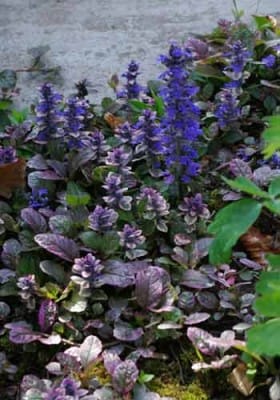
Cornus canadnesis
A creeping, deciduous perennial, spreading by means of rhizomes to form a mat of whorled, mid-green foliage. Attractive flowerheads, comprising tiny green flowers surrounded by 4-6 white petal-like bracts, appear in late spring and early summer, followed by red berries.
Wildlife Interest: the berries are enjoyed by birds.
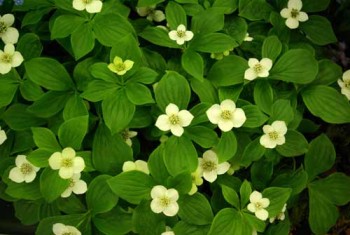
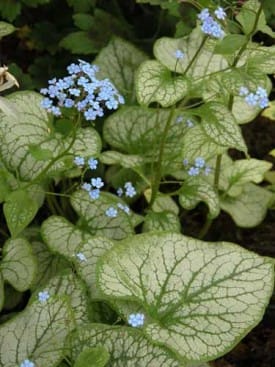
Brunnera macrophylla ‘Jack Frost’
A clump-forming, deciduous perennial, providing good ground cover in shaded areas.
The frosty silver foliage of Brunnera macrophylla ‘Jack Frost’, attractively veined and margined mid-green, helps to illuminate dark corners of the garden.
Delicate sprays of forget-me-not blue flowers appear in mid- and late spring.
Tiarella ‘Iron Butterfly’
A stunning, clump-forming perennial, with attractive foliage and sprays of delicate flowers.
Tiny, starry, white flowers, opening from pink buds, are produced in late spring, sometimes followed by a second flush in summer. The deeply lobed, mid-green leaves have central maroon markings.
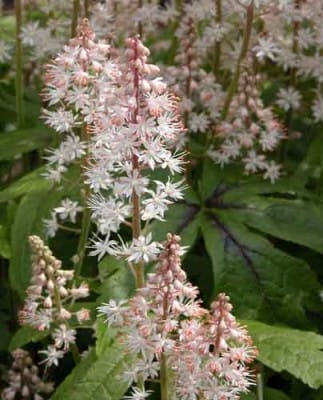
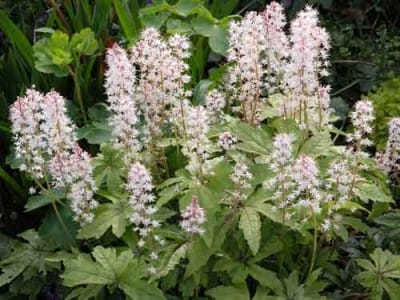
Ferns are popular for their attractive, sometimes evergreen, foliage and often thrive in damp, shady conditions where other plants might struggle.
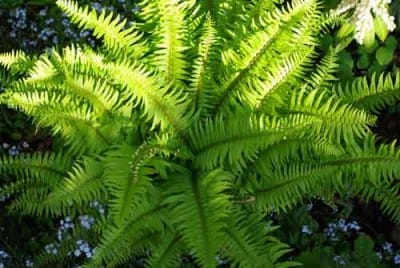
Polystichum munitum
A striking, evergreen fern. It forms an impressive clump of dark green fronds, divided into pairs of narrow leaflets. It likes moist soil in partial to deep shade.
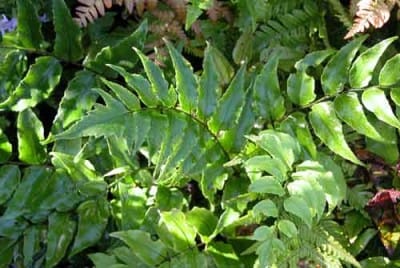
Cyrtomium fortunei
An evergreen fern, forming an upright clump of mid-green fronds. Pairs of roughly triangular-shaped leaflets clothe the stems, providing a useful contrast to ferns with more finely divided foliage. The spores are carried on their undersides.
Mahonia aquifolium
A low-spreading, evergreen shrub with a suckering habit and spring flowers.
Pinnate leaves have up to 9 bright green, spiny-toothed leaflets, turning purple in winter.
Dense clusters of slightly fragrant, bright yellow flowers are produced in spring. The flowers are followed by blue-black berries.
Mahonia berries are edible but very sharp. The birds will probably get to them first!
Wildlife Interest: winter flowers are useful for early insects, while the later berries are attractive to birds.
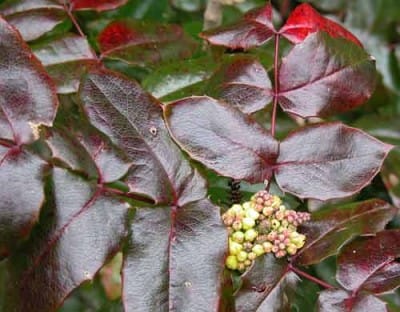
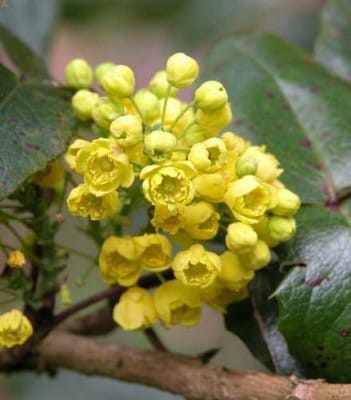
Sarcococca hookeriana var.digyna
A winter-flowering shrub, slowly spreading by suckers to form a compact clump of upright stems.
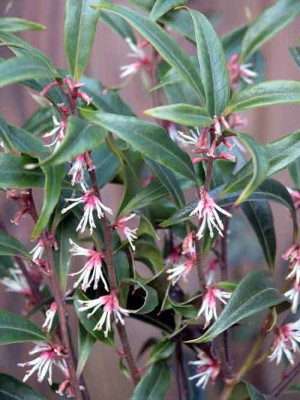
The glossy, evergreen foliage is mid- to dark green. Clusters of tiny, sweetly scented, cream-white flowers are produced in winter, followed by glossy, blue-black berries.
A useful shrub, it tolerates difficult growing conditions such as pollution and shade, though it appreciates being sheltered from cold winds.
Sarcococca can be grown as ground cover, especially in woodland areas.
Wildlife Interest: the scented flowers attract insects, while the shiny berries are enjoyed by birds.
Need a Planting Plan for a Shady Garden?
Choose your favourite planting style (for example: cottage, contemporary, Mediterranean) and pick your colour scheme. The PlantingPlanner will draw up an individual planting plan for you.
Pin for later
For more gardening ideas, click here to follow the Weatherstaff PlantingPlanner on Pinterest.


